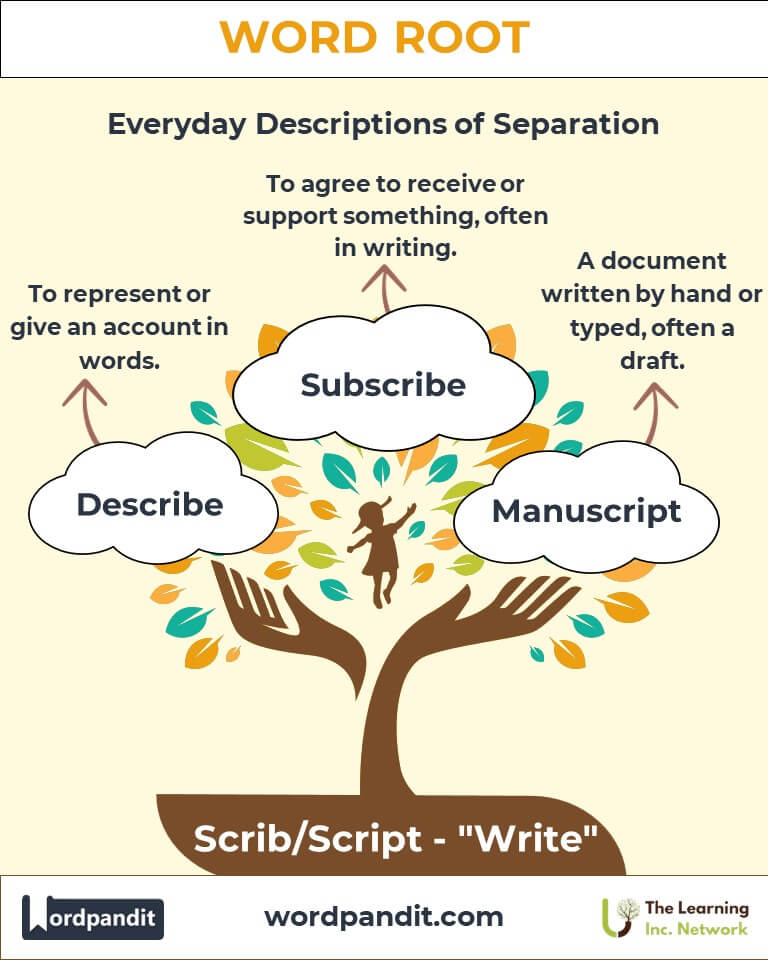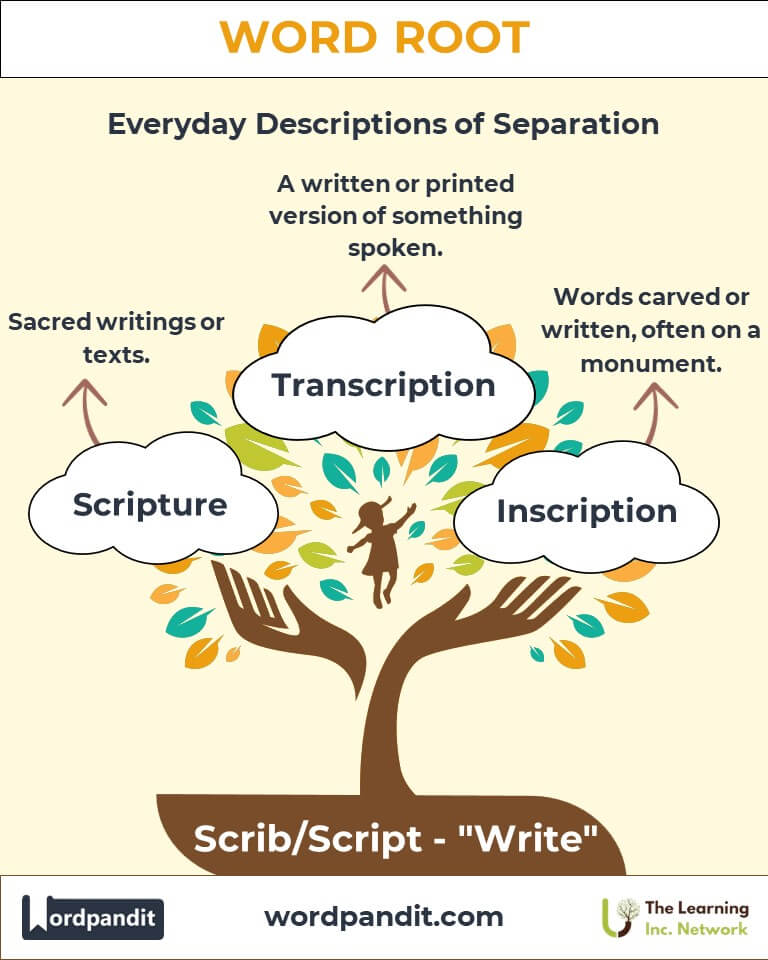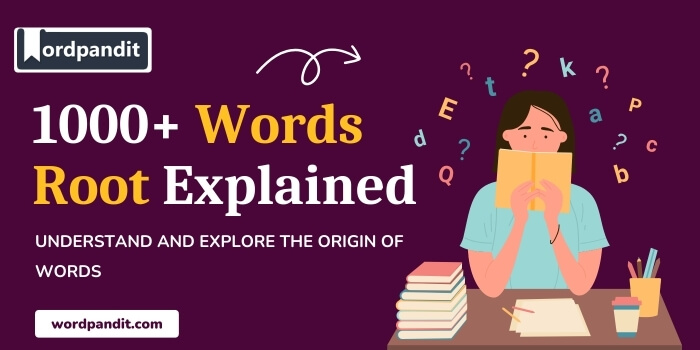Scrib, Script: The Roots of Writing and Expression
Byline: Dive into the fascinating origins of the Latin roots scrib and script, which mean "write." These roots form the backbone of countless words in English, from the practical, like "describe," to the artistic, like "manuscript." Discover how these roots have shaped our understanding of communication and creativity across time.

Table of Contents
- Introduction: The Power of Scrib and Script
- Etymology and Historical Journey
- Mnemonic: Unlocking the Power of Scrib and Script
- Common Scrib and Script-Related Terms
- Scrib and Script Through Time
- Scrib and Script in Specialized Fields
- Illustrative Story: Scrib and Script in Action
- Cultural Significance of Scrib and Script
- The Scrib and Script Family Tree
- FAQs About the Scrib and Script Word Root
- Test Your Knowledge: Scrib and Script Word Root Quiz
- Conclusion: The Living Legacy of Scrib and Script
1. Introduction: The Power of Scrib and Script
Imagine a world without writing—a world without books, contracts, or even simple notes. The roots scrib and script empower the very act of recording thoughts, stories, and information. Derived from the Latin words scribere (to write) and scriptum (a thing written), these roots appear in words that span creativity, documentation, and instruction.

2. Etymology and Historical Journey
The roots scrib and script originated in Latin, with scribere meaning "to write." As the Roman Empire expanded, so did the influence of its language. The written word became a cornerstone of law, literature, and education. Over time, as Latin evolved into Romance languages and influenced English, these roots gave rise to a plethora of terms.
For example, "manuscript" combines manu- (hand) and script (written), originally referring to documents written by hand before the advent of the printing press.
3. Mnemonic: Unlocking the Power of Scrib and Script
Picture a scriptwriter, scribbling furiously on a notepad, their words transforming into a captivating screenplay.
Mnemonic Device: "Scrib and Script are the roots of writing; from scribbles to scripts, they bring stories to life!"
4. Common Scrib and Script-Related Terms
- Describe (dih-skryb): To represent or give an account in words.
Example: "She described the scene vividly, painting a picture with her words." - Manuscript (man-yoo-skript): A document written by hand or typed, often a draft.
Example: "The author submitted her manuscript to the publisher." - Subscribe (suhb-skryb): To agree to receive or support something, often in writing.
Example: "He subscribed to the magazine for a year." - Transcription (tran-skrip-shun): A written or printed version of something spoken.
Example: "The transcription of the speech was shared online." - Inscription (in-skrip-shun): Words carved or written, often on a monument.
Example: "The ancient inscription revealed a forgotten language." - Scripture (skrip-cher): Sacred writings or texts.
Example: "Religious scriptures often guide moral and spiritual beliefs."
5. Scrib and Script Through Time
- Scribere to Describe: The original Latin root evolved into words like "describe," highlighting the act of delineating or detailing in writing.
- Scriptum to Script: While once referring to handwritten documents, "script" has expanded to mean the written text for plays, movies, and even computer programs.
6. Scrib and Script in Specialized Fields
- Education: "Transcript" refers to an official record of academic performance.
- Technology: "Script" describes code written for software or websites.
- Medicine: "Prescription" denotes a written order for medication or treatment.
- Law: "Conscription" historically referred to compulsory written enlistment for military service.
7. Illustrative Story: Scrib and Script in Action
Lila, a young writer, discovered an old manuscript in her grandmother’s attic. The pages were filled with descriptions of life during the Great Depression. Inspired, Lila decided to transcribe the stories for her family. Her dedication to preserving the inscriptions led her to publish a book that touched the hearts of readers worldwide.
8. Cultural Significance of Scrib and Script
Writing has always been a cornerstone of human civilization. From ancient inscriptions on stone tablets to modern-day digital scripts, the act of writing enables storytelling, record-keeping, and communication. The roots scrib and script remind us of the timeless importance of the written word in shaping culture and history.

9. The Scrib and Script Family Tree
- Graph (Greek: "to write"): Biography, Autograph.
- Log (Greek: "word, speech"): Dialogue, Monologue.
- Gram (Greek: "written, drawn"): Diagram, Telegram.

10. FAQs About " Scrib, Script "
Q: What do the roots "scrib" and "script" mean?
A: The roots "scrib" and "script" come from Latin and mean "to write." These roots are fundamental to words that involve writing, recording, or describing ideas, such as "describe," "manuscript," and "prescription."
Q: What’s the difference between "describe" and "inscribe"?
A: Describe means to give a detailed account of something in words. For example, "She described the painting with vivid imagery." Inscribe refers to carving or writing on a surface, such as a monument or book. For instance, "The ancient tablet was inscribed with sacred texts."
Q: What is the origin of "manuscript"?
A: "Manuscript" combines the Latin manu- (hand) and script (written). Originally, it referred to documents written by hand before the invention of the printing press, such as medieval scrolls.
Q: Is "script" only related to movies or plays?
A: No, "script" has broader applications. While it is used for written texts in movies and plays, it also refers to handwriting, sacred writings like "scriptures," and instructions for computers in programming.
Q: What does "transcription" mean?
A: A transcription is a written or printed version of something spoken. For example, court proceedings are often transcribed to create an official record.
Q: What does "subscribe" mean in modern usage?
A: "Subscribe" originally meant to write one’s name under a pledge or agreement. Today, it is widely used to mean signing up for services or agreeing to receive updates, such as subscribing to a newsletter.
11. Test Your Knowledge: " Scrib, Script " Mastery Quiz
1. What does the root "script" mean?
2. Which word refers to sacred writings?
3. What does "describe" mean?
4. What is a manuscript?
5. What does "subscribe" mean?
12. Conclusion: The Living Legacy of Scrib and Script
The roots scrib and script have penned their way into every corner of our lives, from literature to law and beyond. These roots embody the essence of communication, creativity, and connection. As we continue to describe, inscribe, and transcribe, we carry forward the legacy of writing that has shaped human civilization.












